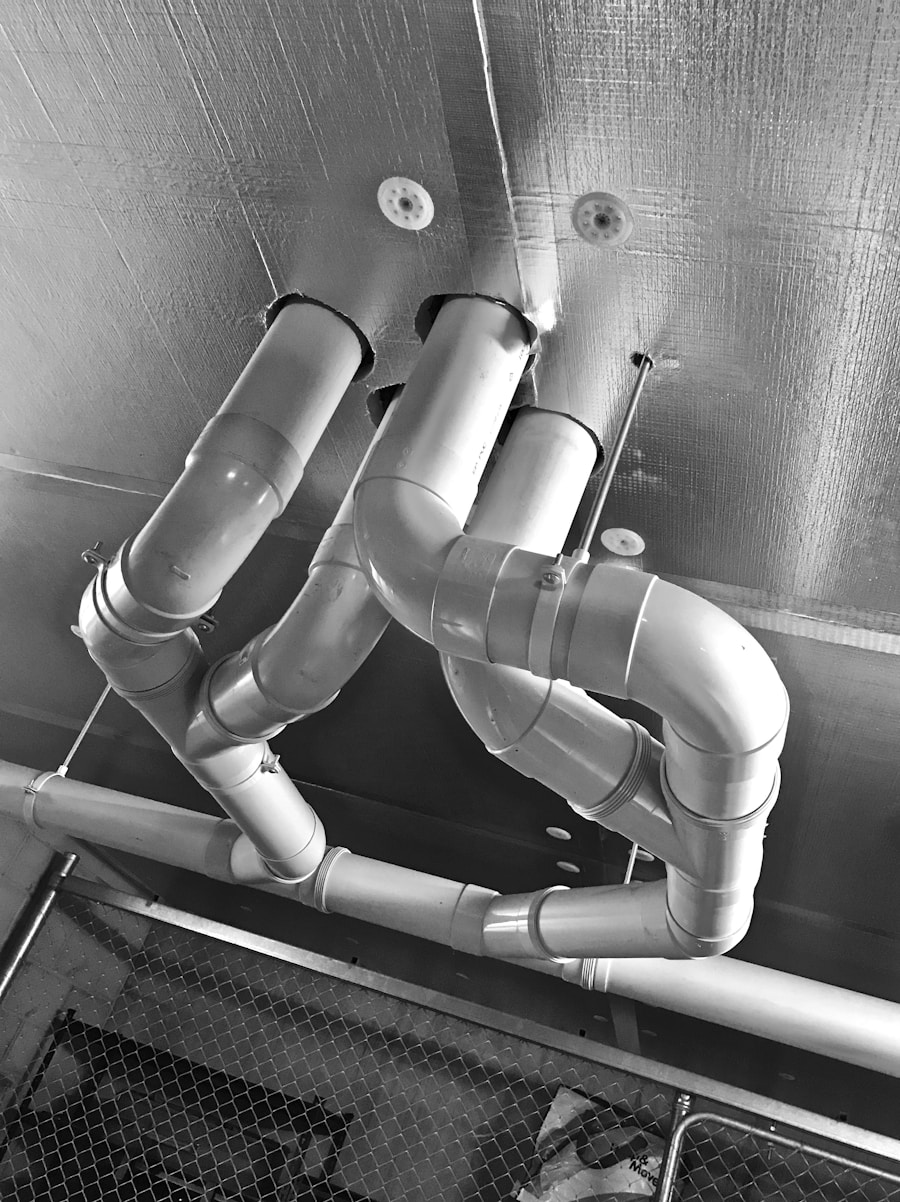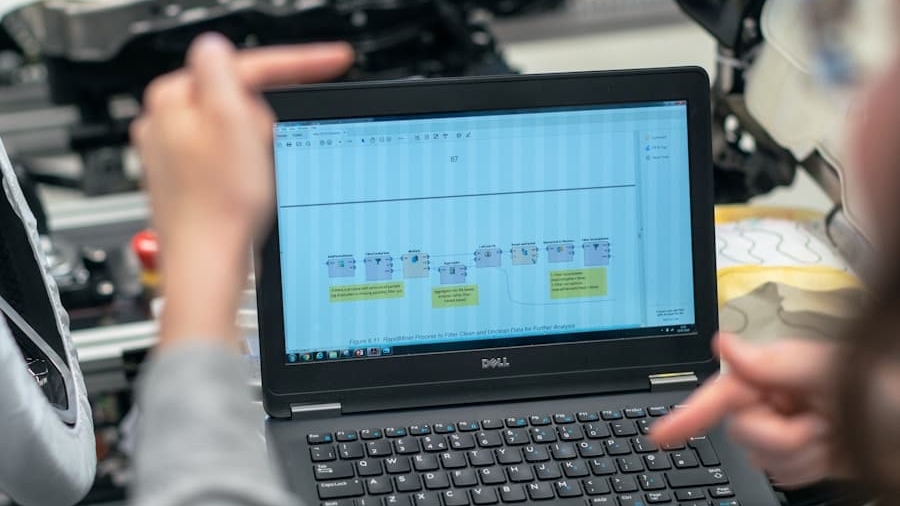Predictive maintenance is a proactive approach to equipment management that leverages data analysis and advanced technologies to predict when machinery is likely to fail. This methodology stands in stark contrast to traditional maintenance strategies, which often rely on scheduled maintenance or reactive repairs after a failure has occurred. By utilizing predictive maintenance, organizations can minimize downtime, reduce maintenance costs, and extend the lifespan of their equipment.
The core principle behind predictive maintenance is the collection and analysis of data from various sources, including sensors, historical performance records, and environmental conditions, to forecast potential failures before they happen. The evolution of predictive maintenance has been significantly influenced by advancements in technology, particularly in the realms of data analytics and machine learning. As industries increasingly adopt the Internet of Things (IoT), the ability to gather real-time data from connected devices has transformed how maintenance is approached.
This shift not only enhances operational efficiency but also allows for a more strategic allocation of resources. By understanding the underlying mechanics of predictive maintenance, organizations can better prepare for the challenges of maintaining complex industrial systems in an ever-evolving technological landscape.
Key Takeaways
- Predictive maintenance uses data and analytics to predict when equipment failure might occur, allowing for maintenance to be performed proactively.
- Predictive maintenance is crucial for industrial equipment as it helps prevent unexpected breakdowns, reduces downtime, and extends the lifespan of machinery.
- Artificial Intelligence (AI) plays a key role in predictive maintenance by analyzing large amounts of data to identify patterns and predict potential equipment failures.
- AI is utilized in predictive maintenance through techniques such as machine learning, deep learning, and predictive analytics to forecast equipment failures and optimize maintenance schedules.
- Using AI for predictive maintenance offers benefits such as cost savings, improved equipment reliability, and increased safety by identifying potential issues before they occur.
The Importance of Predictive Maintenance for Industrial Equipment
The significance of predictive maintenance in industrial settings cannot be overstated. In sectors such as manufacturing, energy, and transportation, equipment failures can lead to substantial financial losses, safety hazards, and operational disruptions. Predictive maintenance serves as a critical tool for mitigating these risks by enabling organizations to anticipate equipment failures and address them proactively.
For instance, a manufacturing plant that employs predictive maintenance can schedule repairs during off-peak hours, thereby minimizing production interruptions and optimizing resource utilization. Moreover, predictive maintenance contributes to improved safety standards within industrial environments. By identifying potential equipment failures before they escalate into serious issues, organizations can protect their workforce from hazardous situations.
For example, in the oil and gas industry, where equipment malfunctions can have catastrophic consequences, predictive maintenance plays a vital role in ensuring that machinery operates within safe parameters. This not only safeguards employees but also enhances the overall reliability of operations, fostering a culture of safety and accountability.
Understanding Artificial Intelligence (AI) in Predictive Maintenance

Artificial intelligence (AI) has emerged as a transformative force in the realm of predictive maintenance.
In the context of predictive maintenance, AI algorithms analyze vast amounts of data generated by industrial equipment to identify trends and anomalies that may indicate impending failures.
This capability allows organizations to move beyond simple statistical models and embrace more sophisticated predictive analytics. The integration of AI into predictive maintenance strategies involves several key components, including machine learning, natural language processing, and computer vision. Machine learning algorithms can be trained on historical data to recognize patterns associated with equipment failures, while natural language processing can be utilized to analyze unstructured data from maintenance logs or operator reports.
Additionally, computer vision technologies can monitor equipment conditions through visual inspections, further enhancing the predictive capabilities of maintenance systems. By harnessing these AI-driven technologies, organizations can achieve a more nuanced understanding of their equipment’s health and performance.
How AI is Utilized in Predictive Maintenance for Industrial Equipment
AI is utilized in predictive maintenance through various methodologies that enhance data analysis and decision-making processes. One prominent approach is the use of machine learning models that are trained on historical operational data to predict future equipment behavior. These models can analyze factors such as temperature fluctuations, vibration patterns, and operational loads to identify signs of wear or impending failure.
For example, a machine learning model might detect that a particular motor exhibits increased vibration levels over time, indicating that it may require maintenance soon. Another way AI is applied in predictive maintenance is through anomaly detection algorithms. These algorithms continuously monitor real-time data streams from sensors embedded in industrial equipment.
When deviations from established norms are detected—such as an unexpected spike in temperature or pressure—alerts are generated for maintenance personnel to investigate further. This real-time monitoring capability allows organizations to respond swiftly to potential issues before they escalate into costly breakdowns.
Benefits of Using AI for Predictive Maintenance
The adoption of AI in predictive maintenance offers numerous benefits that significantly enhance operational efficiency and cost-effectiveness. One of the most notable advantages is the reduction in unplanned downtime. By accurately predicting when equipment is likely to fail, organizations can schedule maintenance activities during non-productive hours or when production demands are lower.
This strategic scheduling minimizes disruptions and maximizes productivity. Additionally, AI-driven predictive maintenance can lead to substantial cost savings over time. Traditional maintenance practices often involve routine inspections and repairs based on fixed schedules, which may not align with actual equipment needs.
In contrast, AI enables a more tailored approach by focusing resources on equipment that genuinely requires attention. This targeted strategy not only reduces unnecessary maintenance costs but also extends the lifespan of machinery by ensuring that it receives timely interventions based on its specific condition.
Challenges and Limitations of AI in Predictive Maintenance

Data Quality and Availability
One significant hurdle is the quality and availability of data. For AI algorithms to function effectively, they require access to high-quality historical data that accurately reflects equipment performance under various conditions. In many cases, organizations may struggle with incomplete or inconsistent data sets, which can hinder the accuracy of predictions.
Integration Challenges
Another challenge lies in the complexity of integrating AI systems into existing infrastructure. Many industrial environments rely on legacy systems that may not be compatible with modern AI technologies. The process of retrofitting these systems or implementing new solutions can be resource-intensive and may require significant investment in both time and capital.
Skills Gap
Furthermore, there is often a skills gap within organizations; employees may lack the necessary expertise to interpret AI-generated insights or manage advanced analytics tools effectively.
Case Studies of Successful AI-Driven Predictive Maintenance
Several organizations have successfully implemented AI-driven predictive maintenance strategies, showcasing the tangible benefits that can be achieved through this approach. One notable example is Siemens Gas and Power, which has integrated AI into its gas turbine operations.
This proactive approach has led to reduced downtime and improved operational efficiency across their fleet. Another compelling case study comes from General Electric (GE), which has developed its Predix platform for industrial IoT applications. GE’s platform leverages AI to analyze data from various industrial assets, enabling predictive maintenance across sectors such as aviation and energy.
By employing advanced analytics and machine learning techniques, GE has helped clients optimize their maintenance schedules and reduce operational costs significantly. These case studies illustrate how AI-driven predictive maintenance can transform industrial operations by enhancing reliability and efficiency.
Future Trends and Innovations in AI for Predictive Maintenance
As technology continues to evolve, the future of AI in predictive maintenance holds exciting possibilities. One emerging trend is the increased integration of edge computing with AI analytics. Edge computing allows data processing to occur closer to the source—such as within the machinery itself—reducing latency and enabling real-time decision-making.
This shift could enhance the responsiveness of predictive maintenance systems, allowing organizations to act on insights almost instantaneously. Additionally, advancements in explainable AI (XAI) are likely to play a crucial role in the future landscape of predictive maintenance. As organizations adopt more complex AI models, understanding how these models arrive at their predictions becomes essential for trust and transparency.
XAI aims to provide insights into the decision-making processes of AI systems, enabling maintenance personnel to comprehend the rationale behind predictions and recommendations better. Furthermore, the convergence of AI with other technologies such as augmented reality (AR) could revolutionize how maintenance tasks are performed. AR applications could provide technicians with real-time visualizations of equipment conditions based on AI predictions, guiding them through repair processes with enhanced accuracy and efficiency.
In summary, the integration of AI into predictive maintenance represents a significant advancement in industrial operations management. As organizations continue to explore innovative applications of AI technologies, they will likely uncover new opportunities for optimizing equipment performance and enhancing overall operational resilience.
In a recent article on the best tablets for kids in 2023, the importance of selecting the right technology for children’s educational and entertainment needs is highlighted. Just as predictive maintenance using AI is crucial for industrial equipment, choosing the best tablet for kids can ensure they have a positive and enriching digital experience. By understanding the specific requirements and features that cater to children’s needs, parents can make informed decisions when selecting a tablet for their young ones.
FAQs
What is predictive maintenance for industrial equipment?
Predictive maintenance for industrial equipment is a proactive maintenance strategy that uses data and AI algorithms to predict when equipment is likely to fail, allowing for maintenance to be performed before a breakdown occurs.
How does AI play a role in predictive maintenance for industrial equipment?
AI plays a crucial role in predictive maintenance by analyzing large amounts of data from industrial equipment to identify patterns and trends that can indicate potential failures. AI algorithms can then predict when maintenance is needed, helping to prevent costly downtime and repairs.
What are the benefits of using AI for predictive maintenance in industrial settings?
Using AI for predictive maintenance can lead to reduced downtime, lower maintenance costs, increased equipment lifespan, and improved overall operational efficiency. It also allows for a shift from reactive to proactive maintenance, leading to better resource allocation and planning.
What types of industrial equipment can benefit from AI-driven predictive maintenance?
A wide range of industrial equipment can benefit from AI-driven predictive maintenance, including manufacturing machinery, HVAC systems, turbines, pumps, compressors, and more. Any equipment that is critical to the operation of a facility and can benefit from proactive maintenance is a good candidate for AI-driven predictive maintenance.
How does AI analyze data to predict equipment failures?
AI analyzes data from industrial equipment using techniques such as machine learning and deep learning to identify patterns and anomalies that may indicate potential failures. This can include analyzing sensor data, equipment performance metrics, and historical maintenance records to make accurate predictions.

